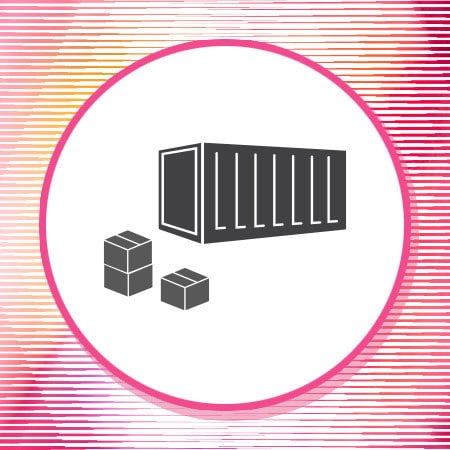How Container as a Service (CaaS) works
Container as a Service (CaaS) platforms come in several varieties, and how each platform works can vary depending on the type of CaaS platform and the provider. For example, Google Cloud Run, AWS Fargate, and Azure Container Instances are CaaS platforms that allow enterprises to deploy containers using a serverless model.
Other forms of CaaS — sometimes described as Kubernetes as a Service — include managed Kubernetes (K8s) platforms like Amazon Elastic Kubernetes Service (EKS), Google Kubernetes Engine (GKE), and Azure Kubernetes Service (AKS). With these platforms, the service provider enables enterprises to run Kubernetes without installing or maintaining nodes or the K8s control plane.
While the specific implementations of CaaS will vary, a high-level breakdown of how container as a service (CaaS) works is:
- The provider creates an abstraction layer that allows containers to be managed independent of the underlying infrastructure.
- The provider exposes interfaces (e.g. web portals, APIs, and command-line interfaces) for enterprises to create, upload, deploy, and manage container workloads.
- Enterprises manage their container workloads using the CaaS interfaces without worrying about the underlying infrastructure and maintenance (hardware, K8s nodes, operating systems, etc.)
Benefits of CaaS
From the perspective of the modern enterprise, CaaS brings many of the traditional XaaS benefits to the world of containers. Specifically, the benefits of CaaS include:
- Reduced operational complexity: With CaaS, enterprises can focus on configuring their container workloads and offload the underlying infrastructure complexity to a service provider.
- Scalability: With CaaS platforms, enterprises can leverage auto-scaling in a straightforward manner.
- Pay-as-you-go pricing: Flexible cloud pricing allows enterprises to pay for the resources they need as opposed to investing heavily in physical infrastructure.
- Faster deployments: Enterprise DevSecOps teams can quickly deploy and test containers in their CI\CD pipelines without worrying about testing the underlying infrastructure or building new clusters.
CaaS vs IaaS vs PaaS
CaaS is often compared to two other XaaS models: Infrastructure as a Service (IaaS) and Platform as a Service (PaaS). Conceptually, CaaS sits between IaaS and PaaS when it comes to levels of control and abstraction.
With IaaS platforms (like AWS EC2 and Azure VMs), the service provider abstracts away hardware, and enterprises can fully configure everything from the operating system to the application stacks they run. With PaaS (like AWS Elastic Beanstalk and Heroku), the service provider abstracts away the hardware, underlying operating system, and runtime environments to provide enterprises a platform for building applications.
With CaaS, enterprises have control over the containers they deploy and this allows a higher level of customization than PaaS. For example, while PaaS runtimes are all the same, each container on a CaaS platform could be built from a completely different tech stack.
CaaS security
Fundamentally, CaaS security is a subset of container security. While service providers take care of security “of the cloud”, enterprises are still responsible for security “in the cloud”. As a result, enterprises still need to follow container security and Kubernetes security best practices when using CaaS.
For example, key aspects of enterprise CaaS security include:
- Only use secure container images: Public container registries often contain known vulnerabilities or even malware. Enterprises should only deploy trusted container images in their CI\CD pipelines.
- Follow the principle of least privilege: Containers and CI\CD pipelines should be built with the principle of least privilege in mind. For example, Enterprises should take a zero trust approach to their IAM policies, limit API access, and restrict Docker containers from using the privileged flag.
- Leverage modern DevSecOps tools: Code and application scanning and threat detection remain cornerstones of cybersecurity. However, traditional security solutions are designed to meet the demands of modern multi-cloud deployments or microservice architectures. To mitigate risk and improve security posture, enterprises need DevSecOps tools designed to protect against the dynamic threats facing modern infrastructure.
Container Security with CloudGuard
CheckPoint’s CloudGuard Container Security fully integrates into CI\CD pipelines and provides end-to-end security throughout the software development lifecycle. With CloudGuard, enterprises can protect their workloads against modern threats whether they build their own clusters or use CaaS.
With CloudGuard, enterprises gain a robust container security solution that can:
- Use Admission Controller to enforce the principle of least privilege across workloads.
- Implement image security scanning for all DevOps pipelines.
- Detect exposed credentials and sensitive data and suggest remediation techniques.
- Automatically scan container images for security vulnerabilities, malicious software, and weak security configurations.
- Automate the deployment of security controls.
- Provide real-time threat prevention, intrusion detection, and threat intelligence.
If you’d like to learn more about how CloudGuard helps enterprises protect container workloads, sign up for an expert-led demo. In the demo, you’ll learn how to gain full control and visibility for containers throughout a multi-cloud environment. For a deep dive into modern workload protection and container security, download our free Container Security Guide.






